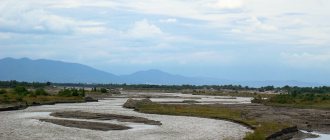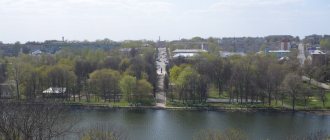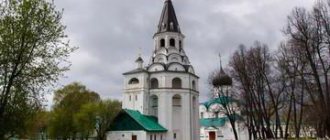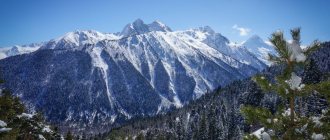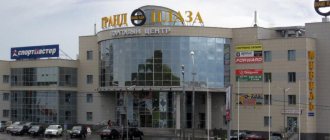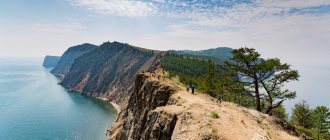Troitsk - attractions and what to see
Historical information. A visit to the city of Troitsk will undoubtedly give you pleasure. Although it is still not entirely appropriate to call it a city - since 2012 it has been part of the Moscow District. It is located just 20 kilometers southwest of the Moscow Ring Road, along the Kaluga Highway.
The history of Troitsk begins in the 17th century with the village of Troitsky. The first mention of the Troitskaya heath can be found in documents from 1627. Then the wasteland belonged to the lands of boyar I.I. Saltykova.
General information
Great progress in the development of the village of Troitsky began with the emergence of a large cloth factory in 1797. Although many historians dispute this date. Thanks to the factory, the village quickly turned into a large settlement. The factory is still one of the largest enterprises in Troitsk!
During the Patriotic War of 1812, the temporary headquarters of Napoleon's retreating troops was located in Troitsky. Historians believe that Napoleon spent two days of the existence of the headquarters in Troitsk in the Levshin manor house. Of course, there are no documents on this matter, but there is oral evidence.
In the fifties of the last century, Troitsk experienced the so-called “dacha period”. By decision of the Moscow Regional Council in 1955, the Krasnaya Pakhra holiday home, the children's playground of the Administration of the Council of Ministers of the RSFSR, the Children's Club "Soviet Writer", a residential village of the Construction Committee under the Council of Ministers of the USSR and a pioneer camp were annexed to the Trinity village. There were dachas of Tvardovsky, Alexander Solzhenitsyn, Yuri Nagibin, Vladimir Vysotsky, Lyudmila Zykina and other famous people.
In March 1977, Troitsk received city status. Its population then was 20 thousand people.
In January 2007, Troitsk was given the status of a science city, according to a decree of the Russian government. And rightfully so - now Troitsk is home to 10 of the largest research centers! These institutes conduct the most important research and development for the country. These institutions became city-forming for Troitsk.
The city is very cozy, beautiful and green, with a favorable environment. There are forests on all sides of the city, and there are no large industrial enterprises.
Troitsk has all the infrastructure for a comfortable life. The nearest metro station is 30 minutes away by shuttle bus. Today the city's population is 61 thousand people.
Troitsk urban district in Moscow
Where to start telling the story of Troitsk?
Since January 29, 2007, when by Decree of the Government of the Russian Federation No. 52 Troitsk was awarded the status of a science city?
Or from March 23, 1977, when the village became the city of Troitsky according to the Decree of the Presidium of the Supreme Soviet of the RSFSR?Or since 1944, when IZMIRAN (then NIISM) began to create the Ionospheric Bureau “in Pakhra” instead of the famous Pavlovsk Observatory destroyed by the Nazis near Leningrad?
Or since 1928, when the “factory village” becomes the “workers’ village of Troitsky”?
Or maybe since August 1751, when Her Imperial Majesty Elizaveta Petrovna gave the go-ahead to Yakov Evreinov to build a linen factory?
Historians Kholmogorovs quote the first mention of Trinity from a scribe’s book of 1627:
“The Troitskaya wasteland on the river on Ryzhkovo... the old patrimony of Ivan Ivanovich Saltykov.”
Lydia Ivanovna Glebova (local historian) not without reason believes that the wasteland could have received such a name only by the name of the village with the church, which, most likely, were destroyed during the Polish-Swedish intervention, and after 1627 they were restored. In 1740, the village of Troitskoye was sold to Alexander Grigorievich Stroganov. It should be clarified that the Stroganov dynasty is one of the oldest in Russia. Its representatives were merchants, industrialists, diplomats, military men, philanthropists, they were considered both friends and enemies of Pushkin, and they added the Beef Stroganoff dish to their cuisine.
No less can be said about Yakov Matveevich Evreinov (1700 – 1772), who bought Trinity in 1747.
The son of the founder of the family, merchant M.G. Evreinov, he was sent by Peter I to study foreign languages abroad, where he spent four years. Under Empress Elizabeth Petrovna, he was a diplomatic agent in Holland. Being an extraordinary personality, Yakov Evreinov played an important role in the history of the Trinity factory (By the way, on his mother’s side, one of the founders of Trinity science, Academician E.P. Velikhov, also comes from the ancient noble family of the Evreinovs).
In the 19th century Troitsky was owned by the Levshins, the Prokhorovs (partly) and the Cherkasovs. The latter are the direct heirs of Baron I.A. Cherkasov, a close associate of Peter I.
The Troitsk environs played a significant role in the events of 1812 in connection with Kutuzov’s maneuver, which blocked Napoleon’s retreat along the Old Kaluga Road. For many years, local historians have been trying to find out exactly where Napoleon spent the night after leaving Moscow on the morning of October 19, 1812. Various sources mention Napoleon’s stay in Troitsky.
In any case, the abundance of sources and analysis of real events allows us to assert that Napoleon stayed in our area. Perhaps turning to primary source documents (many of which are in French) will answer the main question: in which house was the headquarters and whether this place can be indicated on the map of modern Troitsk.
Factory
The Trinity Worsted Factory is the oldest city enterprise. It has long played a decisive role in the development of the village and settlement of Troitsky and has not lost its influence on the life of the modern Troitsk science city.
The question of the founding date of the Factory still causes debate, and local historians have not reached a consensus. For example, in the authoritative publication “Cities of the Moscow Region” the date “1797” is indicated. It became widespread - to the point that it was immortalized with a memorial plaque at the factory entrance. However, Troitsk researchers did not find such a date in the archives, and its origin is unclear.
Akademgorodok
The beginning of the formation of Troitsk as a scientific center can be considered the summer of 1938. Then, at 40 km of the Kaluga highway, a geophysical observatory began to be built. But its creation was prevented by the war. In 1944, employees of the Research Institute of Terrestrial Magnetism (based near Leningrad before the war), headed by director Nikolai Vasilyevich Pushkov, arrived in the unfinished premises. This team was destined to become the first scientific landing party, which determined the development of the city as a future science city.
Boris Mikhailovich Lyakhov writes in the book “History of Geomagnetic Research and IZMIRAN”:
“Practically, the construction of the first residential building could only begin on April 18, 1948. On this day, a “resurrection day” was announced, the task of which was to dig a pit for the foundation of the first eight-apartment residential building (Tsentralnaya, 1/3). The only tools were bayonet and shovel shovels. The following Sunday, April 25, the rubble foundation was laid, and according to the old Russian custom, silver coins were placed in the corners of the building, under the rubble. Timber for construction was supplied in the form of logs; to saw them, it was necessary to have a sawmill, and for the sawmill - its own transformer substation. The cable for the high voltage line was pulled two kilometers by NIISM employees from the village of Vatutinki.
A year later, in 1949, the first two-story house without any amenities was put into operation. Almost simultaneously, eight three-room panel houses were commissioned. According to the project, these houses were supposed to be two-room, with a bathroom, even bathtubs were brought in. But due to the lack of water supply and sewerage in the city, the bathroom was adapted into a kitchen, and the kitchens turned into living rooms.
The occupancy of the constructed houses made it possible to vacate the main building and relocate employees who were forced to rent rooms in nearby villages. Temporary barracks were built in which it was considered lucky to get at least a room.”
From that time on, active construction of the Academic Town began, first for employees of NIISM, then for the Magnetic Laboratory (Kurchatov FIAE).
By 1964, the village of IZMIRAN grew into Akademgorodok, where, in addition to IZMIRAN, the construction of the Institute of High Pressure, the Institute of Spectroscopy, and the Magnetic Laboratory of the Institute of Atomic Energy named after. Kurchatova. In accordance with the order of the Presidium of the USSR Academy of Sciences dated October 24, 1964 No. 53 2078, the Board of Directors was created.”
Nadezhda Mikhailovna Afanasyeva, an honorary citizen of the city and the first chairman of the executive committee of the Troitsk City Council, recalls:
“By 1973, when I was elected chairman of the Troitsk Village Council, I had already worked for 10 years as director of the Krasnopakhorsky forestry enterprise.
The institutes carried out active housing construction, drawing from the boiler network. The House of Scientists has already been built at 40 km, with a large store nearby. At the helm of the rapidly developing Academy Town was the Council of Directors of Scientific Institutes. The first chairman was N.V. Pushkov, he was replaced by L.F. Vereshchagin. Money was allocated mainly for science and housing construction, while social and cultural services lagged behind.
Microdistrict “A” was being built up. The first houses began to be built in microdistrict “B”. There were only two schools - one and one at the factory. The hospital was overcrowded. Semashko. SMU 10 led the construction of the White House.
After some time, funding began to flow into the social and cultural sector. An adult clinic and school No. 2 were built, school No. 3 was urgently built, and school No. 5 was designed. The street was being built up. Solnechnaya, Oktyabrsky Avenue was being laid.
Then the FIAE named after them joined the construction. Kurchatov, headed by V.D. Written. Three kindergartens, a children's clinic, a department store in microdistrict "B", a bathhouse, a market, and an Exhibition Hall were built. Social and cultural facilities began to be designed on the first floors of new buildings: registry office, “Baytiki”. The Office of the Commissioner built a House of Scientists at 41 km, a House of Public Services, an automatic telephone exchange, etc. The Village Council moved to the current building.
The authority of Akademgorodok grew. The population participated in its improvement. It was the cleanest village in the region, people began to come to us for experience.
On March 23, 1977, the village was given the status of a city of regional subordination.”
Each district has a coat of arms
New Moscow continues to develop. In 2021, the construction of 9 schools and 13 kindergartens is planned. Also, the construction of modern neighborhoods with all the necessary infrastructure continues here, from the arrangement of children's and sports grounds to medical institutions. Photo: Viktor Khabarov, “Evening Moscow” On July 1, New Moscow will celebrate its ninth anniversary. And they have already given her a nice gift. The districts were given a coat of arms. “BUT” found out what the new symbols of the TiNAO mean.
The process of creating coats of arms is quite complex. On the one hand, heraldry has its own laws and rules that facilitate this process. Color, shape - everything here has its meaning. On the other hand, the person who is drawing up the coat of arms must himself understand what needs to be depicted on it. Almost anything can appear in the picture.
“Even human parts of the body,” says Dmitry Makarov, candidate of historical sciences, specialist in heraldry.
And even animals that don’t exist at all! For example, the coat of arms of the settlement of Sosenskoye depicts a unicorn. And this is historically justified. Of course, no horned horses walked on this land. But for several centuries, this territory was owned by the Shuvalovs, prominent statesmen. Being representatives of a noble family, they had their own family coat of arms, which depicted a unicorn, which means purity, trust, courage, spirituality and sublimity.
So if you see something unusual on the coats of arms, know that it is historically justified.
By the way, all municipalities of the TiNAO have coats of arms. Now they have appeared at the TAO and NAO, indicating ownership of the territory. This is how it happened historically.
— Although the first coats of arms appeared in Europe in the 10th century. But they were intended for military operations in order to distinguish our own from strangers. And over time, they began to appear among states, regions and even noble families,” says historian Dmitry Makarov. — And if you are familiar with history, then you can quite understand what is depicted on certain coats of arms. But sometimes ordinary knowledge is not enough.
Trinity shamrock
The shamrock symbolizes the Holy Trinity, as well as the unification of territories. Birch leaf : on the one hand, according to Russian tradition, on the day of the Holy Trinity, icons were decorated with birch leaves. Hence the symbol of the district. On the other hand, a green birch leaf can mean a young developing city. Troitsk itself is relatively young. It began to form after the war, and received city status only in 1977 Notch : the Moscow coat of arms can be recognized immediately.
Modern heraldists came up with a notch specifically to show that this municipality is located on the territory of Moscow. Such a notch means the prong of the Kremlin. It is called the swallow's tail. The TAO coat of arms was dealt with in an unusual manner. On the one hand, it has an official “transcript”.
“It’s based on a birch leaf, the same one that can be seen on the coat of arms of Troitsk,” says Dmitry Makarov.
When the city district was part of the Moscow region, it received its name from the Church of the Holy Trinity, which was once located here. However, the historian interpreted the coat of arms a little differently.
— White is the color of purity. And here it may mean that enormous changes await this uncharted territory, says the historian. — And as we know, nowhere in the world there are no analogues to New Moscow in terms of the pace of development and construction.
Rose of Novomoskovsk district
White : this is nobility, frankness, purity. Green denotes abundance, hope for the best. Red denotes masculinity, determination Gold : source of life and wealth, both material and spiritual Rose : symbol of agricultural enterprises. The main ones on the territory of the Nenets Autonomous Okrug Form : in essence, all coats of arms are shields.
True, they come in different shapes. Ours, which is most often used in Russia, is called French. It has been the basis of all Russian heraldry since the time of Peter I. And all because the emperor appointed Francis Santi to the post of chief Russian heraldmaster, who adopted the French tradition - The coat of arms of the Nenets Autonomous Okrug was based on the coat of arms of the settlement of Moscow, which became the center of the entire district. Namely the rose that adorns it. The division into two parts shows that there are two important agricultural enterprises in the district, says Dmitry Markov.
This is the largest Moscow agricultural complex in Europe and a unique agricultural enterprise - the Ulyanovsk State Farm of Ornamental Horticulture. In the 20th century they became city-forming enterprises.
White - nobility, frankness, purity. And gold and green represent justice and abundance.
Nine achievements in nine years
1
In the Moskovsky settlement, the Salaryevo international bus station was opened in 2021, from which you can travel to Belarus, Moldova, Georgia, Germany, Ukraine and 35 Russian cities.
2
In nine years, eight metro stations were built here: Rumyantsevo, Salaryevo, Filatov Lug, Prokshino, Olkhovaya, Kommunarka, Govorovo and Rasskazovka. You can also get to the settlement of Ryazanovskoye and the urban district of Shcherbinka using the MCD-2.
3
For nine years in New Moscow, you cannot find a settlement or urban district where the construction of schools and kindergartens has not begun. On September 1, 2021, about 52 thousand students and 24 thousand pupils crossed the threshold of general education institutions.
Photo: Viktor Khabarov, “Evening Moscow”
4
New Moscow was one of the first to take the hit during the pandemic. The newest hospital in Kommunarka with the most modern equipment appeared here. She took the first blow of the pandemic.
5
The infectious diseases hospital in the Voronovskoye settlement, built in record time, was among the finalists of the international MIPIM Awards 2021.
6
About 10 clinics were built in the TiNAO over nine years, and the number of doctors in the medical organizations of the TiNAO increased from 383 to 690, nursing staff - from 671 to 921.
Photo: Viktor Khabarov, “Evening Moscow”
7
The embankment in the Voronovskoye settlement, after large-scale improvement, has become a certified track for holding All-Russian race walking competitions. In the future, they are preparing to welcome athletes from all over the world.
8
About 30 road and transport infrastructure facilities were built/reconstructed, including 5 railway overpasses with a total length of 212 km. In total, by 2024, about 492 km of roads will be built and reconstructed on the territory of New Moscow.
9
There are 70 scientific and industrial facilities on the territory of New Moscow. On March 10, 2021, on the basis of Technospark, the country’s only Russian Center for Flexible Electronics was opened, which makes thin-film transistor matrices and key components for various devices.
SURVEY
Residents of New Moscow tell what, in their opinion, has changed in TiNAO since 2012.
Anastasia Esina , resident of the Vnukovskoye settlement
I can’t help but say how clean New Moscow has become. There is a huge difference. I live in Vnukovsky and often go to Novofedorovsky and notice how these territories are monitored. They mow the grass and take care of every street. And also pay attention: in almost every settlement there are luxurious parks where you can walk, barbecue, and relax with children.
Danil Chikirenda , resident of the Troitsk urban district
My friends who live in Filimonkovsky stopped getting stuck in traffic jams. Their journey along the Maryino-Salaryevo highway takes no more than fifteen minutes! Can you imagine this? And if you travel by public transport, there are now more buses and minibuses. And they started walking much more often.
Alexander Matveev , history teacher at school No. 2120 in the Moskovsky settlement
It seems to me that the quality of education that students of the TiNAO receive has improved.
Cadet, medical, and engineering classes appeared in schools in the former Moscow region. Participation in such projects made it possible to enrich the material base of schools and regularly visit museums, galleries, and research centers. Many schools have turned not only into educational, but also into scientific complexes, and to some extent have become educational and cultural centers of the TiNAO. Post Views: 64
